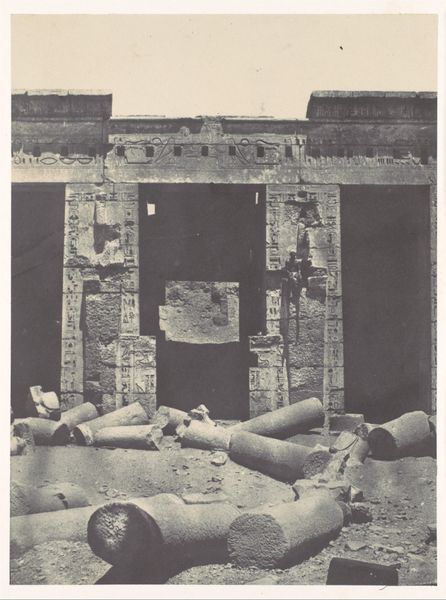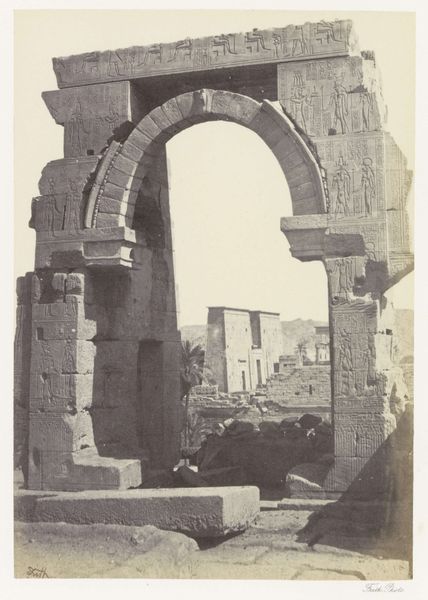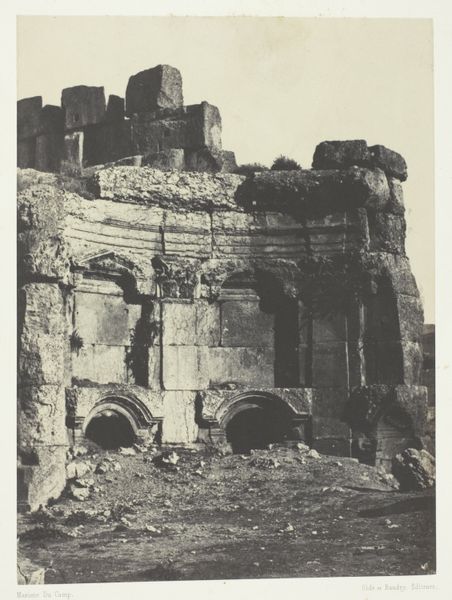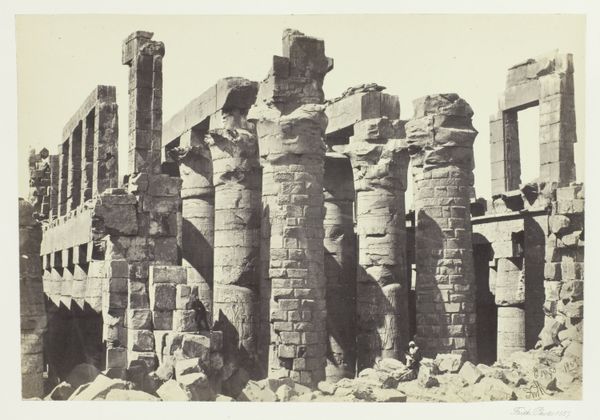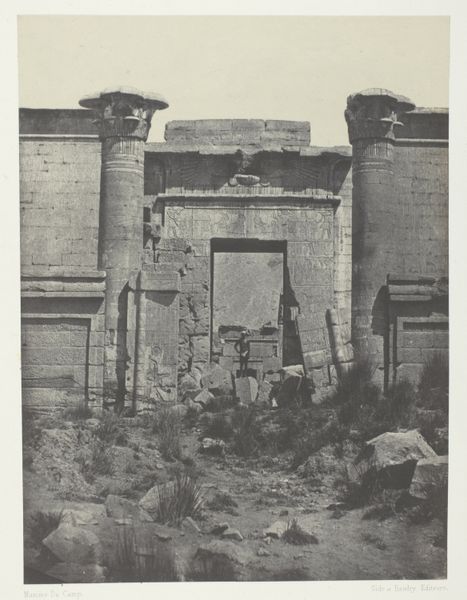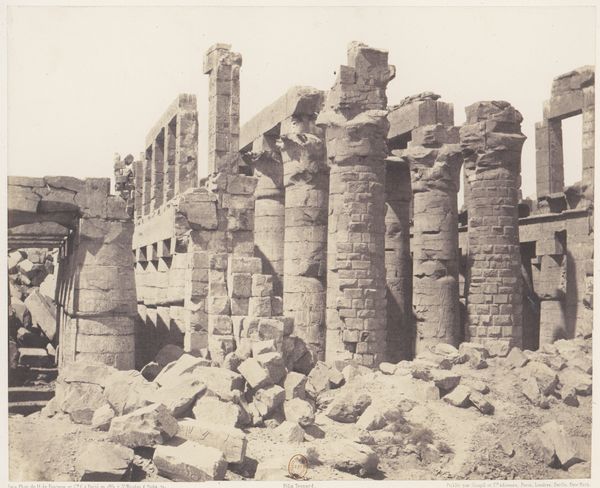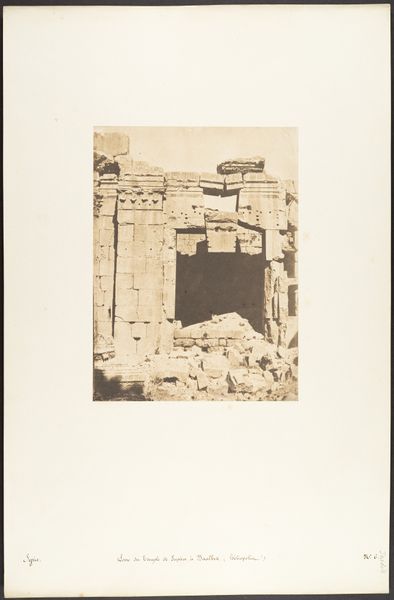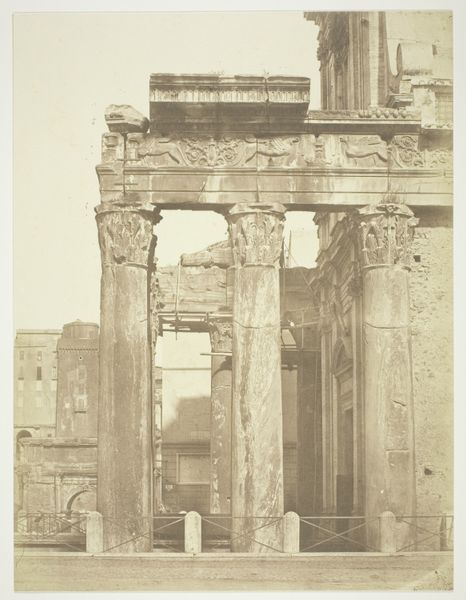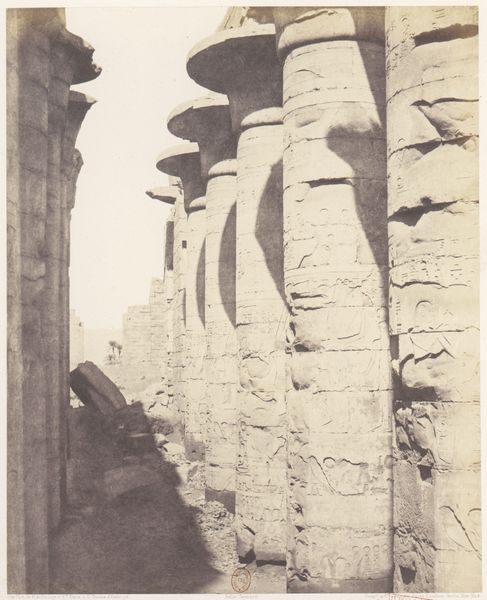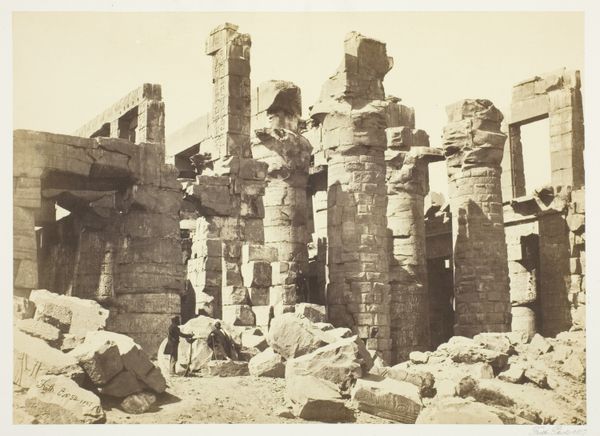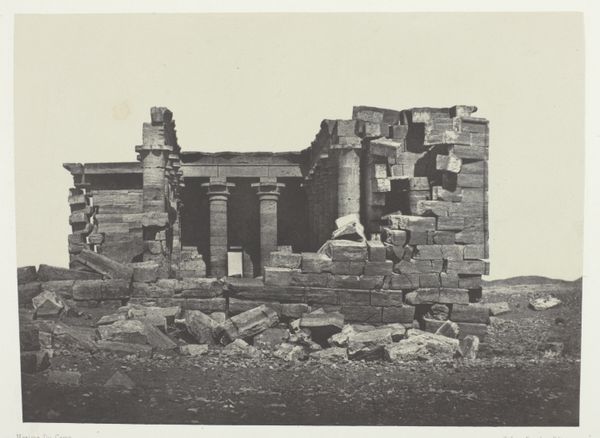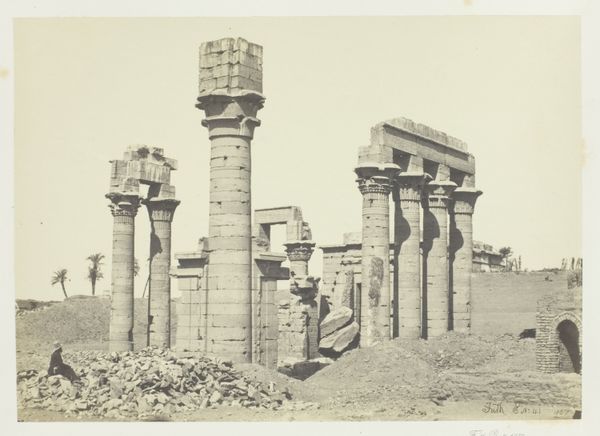
Kalabscheh, Porte du Pronaos; Nubie Possibly 1849 - 1852
0:00
0:00
print, paper, photography, gelatin-silver-print
#
16_19th-century
# print
#
organic shape
#
war
#
landscape
#
ancient-egyptian-art
#
paper
#
photography
#
geometric
#
ancient-mediterranean
#
gelatin-silver-print
#
history-painting
Dimensions: 23.1 × 16.2 cm (image/paper); 43.1 × 29.9 cm (album page)
Copyright: Public Domain
Maxime Du Camp made this photograph of the Kalabscheh temple in Nubia using a waxed paper negative, sometime in the mid-nineteenth century. It's a medium that was relatively new at the time, but it allowed French artists to make detailed studies of ancient sites like this one. What is the public role of photography, especially when it documents ancient monuments? In this case, the image serves both as a record of a specific place and time and also as a kind of cultural trophy brought back to Europe. Du Camp made his photographs as part of a larger project underwritten by the French government to document monuments in the near east. Consider how the image carries the weight of colonial ambitions and scholarly inquiry. To further understand the work, you might research France's colonial involvement in Egypt during the 1800s. By examining the social conditions of artistic production, we can better understand its historical meaning.
Comments
No comments
Be the first to comment and join the conversation on the ultimate creative platform.
